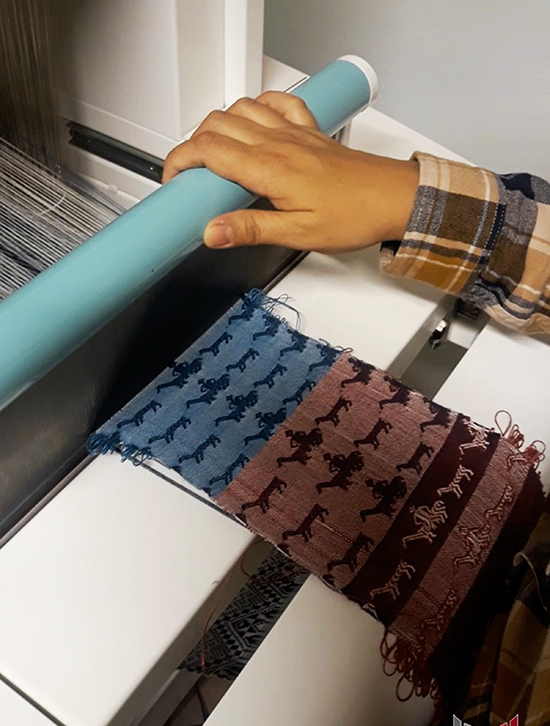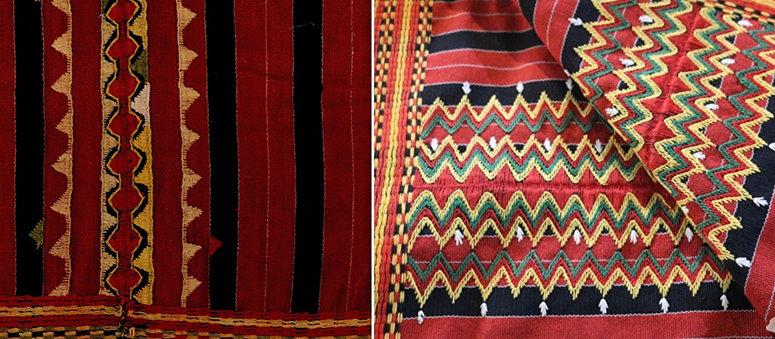New looms for old
When we first met Dr. Analyn “Ikin” Salvador-Amores at the University of the Philippines Baguio five years ago, she was already the director of the new and fascinating Museo Kordilyera that had just opened to showcase the culture of the northern highlands.
Ikin graciously took Beng and me on a tour of the exhibits, which UPB had painstakingly put together from its own collections and from the donations of such patrons as National Artist and Baguio resident BenCab.
But going beyond what was on display, Ikin brought us to the museum’s laboratory —research is the other important part of its mandate — to show us their growing collection of rare Philippine textiles. Some of these were a century old, retrieved and repatriated from collections abroad by Ikin herself, or donated by collectors.
This, she indicated, was going to be a vital aspect of the Museo Kordilyera’s mission — to gather and preserve the threads of the past for the appreciation of new generations of Filipinos.

Indigenous textiles have a long history in the Philippines, having been woven long before the Spanish came — indeed, more than a millennium before the Christian era.
They were used for clothing and also for ceremonial purposes such as the burial of the dead. They come in a wide range of materials, designs and uses, from the abel and Bontoc of the north to the hablon and piña of the Visayas and the Yakan and tinalak weaves of the south, among many others.
Using local fibers and dyes, native weavers employ hand looms to turn their traditional designs — animals, celestial objects, humans, deities, and geometric shapes — into not just functional clothing but works of art and visual bearers of their tribe’s or community’s culture.

But these traditional weavers and their products are under threat from many factors, and unless proper and timely intervention is undertaken, cultural advocates like the Oxford-trained Dr. Salvador-Amores worry that they could decline further if not vanish in this digital century.
She points to four major reasons for this decline: the advanced age of master weavers and the lack of young people willing to take their place; the scarcity of materials for weaving such as cotton; new technology, cheaper mass-produced substitutes, even fake “ethnic” fabrics; and ready-to-wear clothes and ukay-ukay, reducing demand for traditional textiles.
Enter the Cordillera Textiles Project or CordiTex, which Ikin is also directing, aimed at finding and employing new technology to revive the ancient art of weaving and train and engage a new generation of weavers.
The technology comes in the form of the Universal Testing Machine that analyzes the internal and external characteristics of Cordillera textiles so they can be technically described, and the digital loom, which — with the help of software — can recreate old designs and fabrics, especially those that weavers can no longer make, and assist those weavers in doing them on their traditional backstrap or foot looms.
Before the machines come into the picture, however, much research has to be done. CordiTex is a multidisciplinary endeavor, involving anthropology, ethnobotany, ethnomusicology, ethnomathematics, physics, chemistry, ergonomics, economics, and geography. (I’ll bet some of us didn’t even realize these disciplines existed. And if we wonder why “ergonomics” is important in weaving, it’s because weavers often suffer from musculoskeletal problems of the neck, shoulders, and lower back; strain from incorrect posture; and chronic lower back problems.)
Ikin’s team has conducted research not just in the Cordillera region, but also in weaving collections in the US, Germany, and Austria, where samples gathered a century ago by expeditions to the Philippines are kept. In the US, for example, much material and information can be found at the Museum of Anthropology at the University of Michigan, the Field Museum in Chicago, the American Museum of Natural History, and the Newberry Library.
Mathematical symmetry analysis figures out the math behind traditional designs so they can be rendered into formulas, followed by 3-D modeling, to take the physical properties and the weaving structures of the fibers into account.


Now enter the digital loom — the Thread Controller 2 or TC2 — a machine designed, developed and made by Digital Weaving Norway (DWN) to turn design ideas into woven fabrics. Rolled out in 2012, the TC2 is a hand-operated electronic jacquard loom, capable of producing both traditional and contemporary weaves for industrial and artistic purposes.
The University of the Philippines has acquired two of these machines — one for UP Baguio, and another for the College of Home Economics in UP Diliman. Six researchers from UP led by Ikin went to DWN to study the use of the machines, and workshops have since been conducted in Baguio and Diliman, assisted by a visiting expert from DWN, to introduce the TC2 and its technology to local weavers and researchers.

Dr. Salvador-Amores is emphatic that their work in CodiTex is not aimed at replacing hand looms. “While CordiTex can now replicate and reconstruct traditional extant textiles through digitization and digital loom weaving, we are doing this so that the younger generation can re-weave these in their traditional looms,” she said. “Hopefully this will empower local weavers, engender ethnic identity, and sustain Cordillera weaving.”
The next time you visit Baguio, take a side trip to the Museo Kordilyera to see what the fuss is all about. You might get lucky and catch Ikin — or if not, then her pioneering book Tapping Ink, Tattooing Identities: Tradition and Modernity in Contemporary Kalinga Society (UP Press, 2014), yet another fascinating topic altogether.


